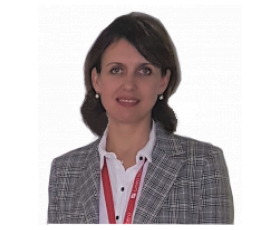Ausra Saudargiene, PhD

Coordinator, Neuroscience Institute, Lithuanian University of Health Sciences, Kaunas, Lithuania
The Computational Neuroscience group, headed by Prof. Ausra Saudargiene, focuses on computational modeling of synaptic plasticity in hippocampus and cortex in health and in neurodegenerative disorders. Prof. Ausra Saudargiene developed biophysical and molecular models of synaptic plasticity in hippocampus and cortex, analyzed memory encoding and retrieval in hippocampal CA1 microcircuit.
Key Publications:
Saudargiene A, Graham BP. Factors affecting STDP learning rules in the dendrites of CA1 pyramidal cells. Hippocampal Microcircuits: A Computational Modeler’s Resource Book. Springer Series in Computational Neuroscience. 2nd Edition, 2018.
Saudargiene A, Jackevicius R, Graham B. Interplay of STDP and Dendritic Plasticity in a Hippocampal CA1 Pyramidal Neuron Model. Proc. of the 26th International Conference on Artificial Neural Networks, 11-15 September 2017, Alghero, Italy. Springer-Verlag Lecture Notes in Computer Science. 217;381-388.
Havela R, Manninen T, Saudargiene A, Linne M-L. Modeling Neuron-Astrocyte Interactions: Towards Understanding Synaptic Plasticity and Learning in the Brain. Proc. of the 2017 International Conference on Intelligent Computing, 7-10 August 2017, Liverpool, UK. Springer-Nature volume: Lecture Notes in Computer Sciences. 2017.
Saudargiene A, Cobb S, Graham BP. A computational study on plasticity during theta cycles at Schaffer collateral synapses on CA1 pyramidal cells in the hippocampus. Hippocampus. 2015; 25(2):208-18.
Saudargiene A, Graham BP. Inhibitory control of site-specific synaptic plasticity in a model CA1 pyramidal neuron. Biosystems. 2015; 130:37-50.
Coordinator, Neuroscience Institute, Lithuanian University of Health Sciences, Kaunas, Lithuania
The Computational Neuroscience group, headed by Prof. Ausra Saudargiene, focuses on computational modeling of synaptic plasticity in hippocampus and cortex in health and in neurodegenerative disorders. Prof. Ausra Saudargiene developed biophysical and molecular models of synaptic plasticity in hippocampus and cortex, analyzed memory encoding and retrieval in hippocampal CA1 microcircuit.
Key Publications:
Saudargiene A, Graham BP. Factors affecting STDP learning rules in the dendrites of CA1 pyramidal cells. Hippocampal Microcircuits: A Computational Modeler’s Resource Book. Springer Series in Computational Neuroscience. 2nd Edition, 2018.
Saudargiene A, Jackevicius R, Graham B. Interplay of STDP and Dendritic Plasticity in a Hippocampal CA1 Pyramidal Neuron Model. Proc. of the 26th International Conference on Artificial Neural Networks, 11-15 September 2017, Alghero, Italy. Springer-Verlag Lecture Notes in Computer Science. 217;381-388.
Havela R, Manninen T, Saudargiene A, Linne M-L. Modeling Neuron-Astrocyte Interactions: Towards Understanding Synaptic Plasticity and Learning in the Brain. Proc. of the 2017 International Conference on Intelligent Computing, 7-10 August 2017, Liverpool, UK. Springer-Nature volume: Lecture Notes in Computer Sciences. 2017.
Saudargiene A, Cobb S, Graham BP. A computational study on plasticity during theta cycles at Schaffer collateral synapses on CA1 pyramidal cells in the hippocampus. Hippocampus. 2015; 25(2):208-18.
Saudargiene A, Graham BP. Inhibitory control of site-specific synaptic plasticity in a model CA1 pyramidal neuron. Biosystems. 2015; 130:37-50.